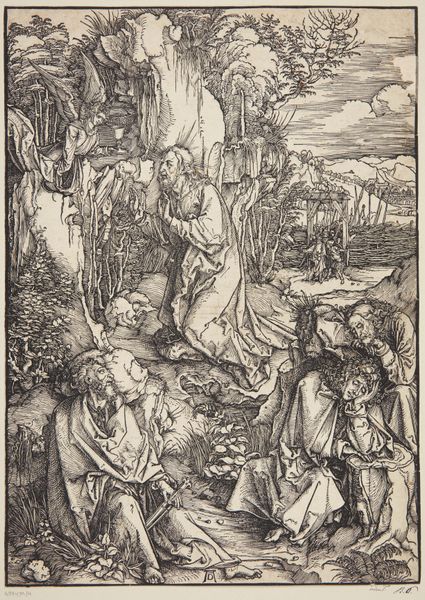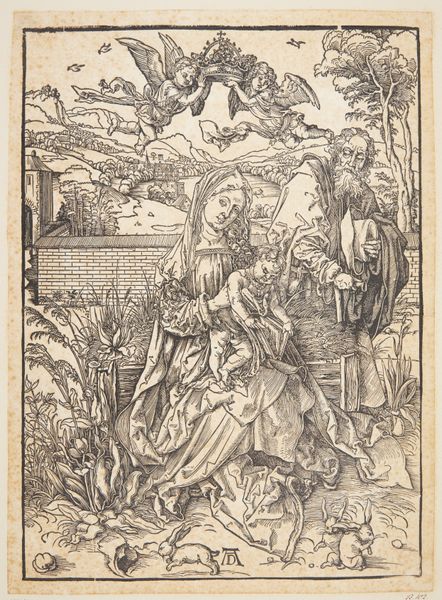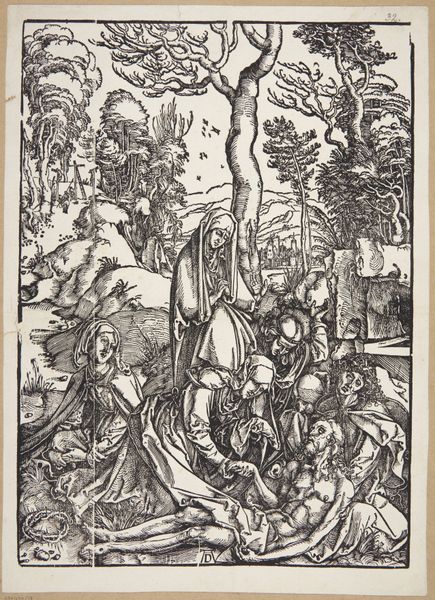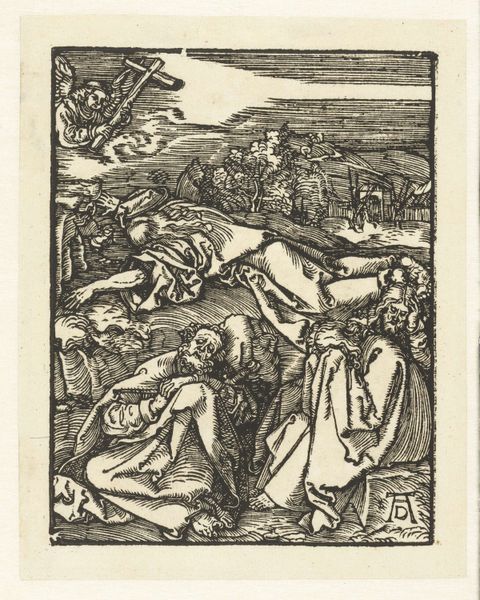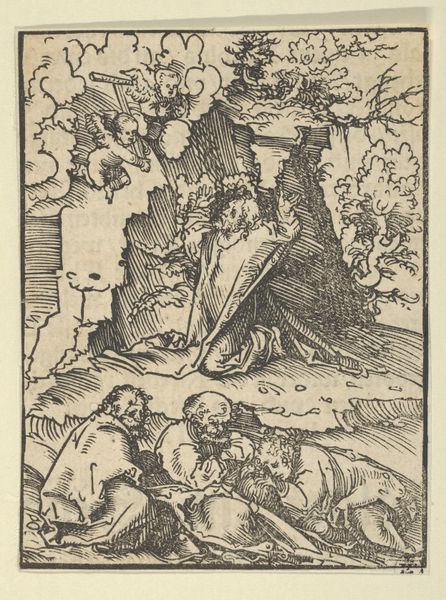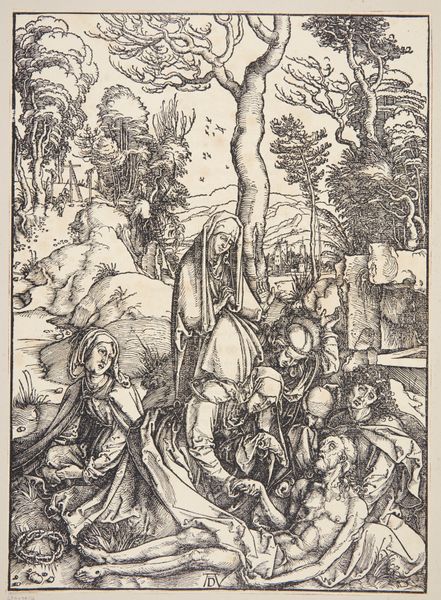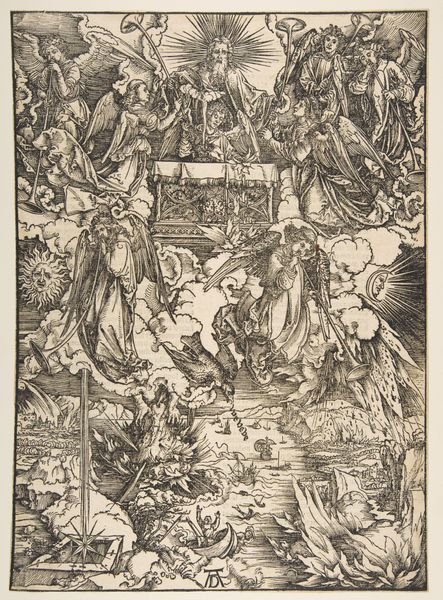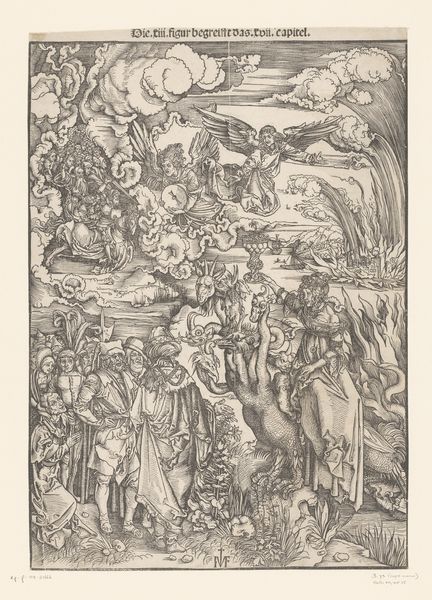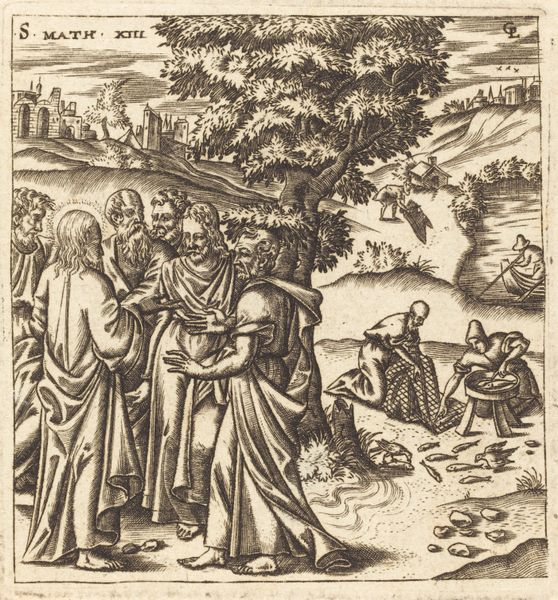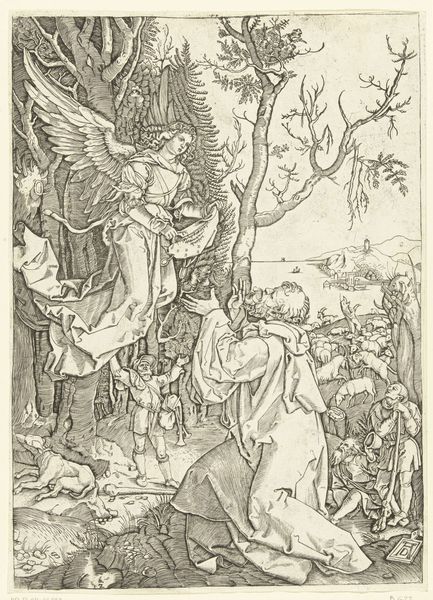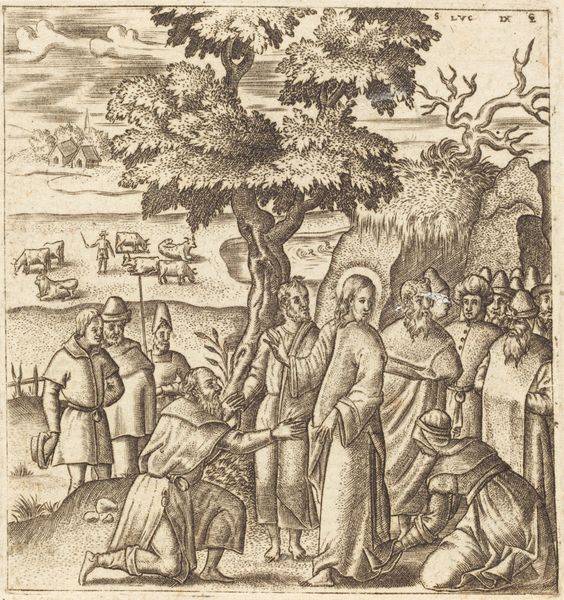
drawing, print, woodcut
#
drawing
#
pen drawing
# print
#
figuration
#
woodcut
#
line
#
crucifixion
#
history-painting
#
northern-renaissance
Dimensions: sheet: 8 11/16 x 5 3/4 in. (22 x 14.6 cm)
Copyright: Public Domain
Editor: Here we have Albrecht Durer's "Saint Francis Receiving the Stigmata," made around 1503-1504. It’s a woodcut, so, a print. What strikes me most is the incredible detail achieved with just lines, but what can you tell us? Curator: Consider the implications of a printed image in 1504. This wasn't a unique object made for a wealthy patron. Dürer could produce multiples, distributing imagery and, crucially, ideas to a far wider audience. How does the use of line itself function as a material reality within the larger context? Editor: So the printmaking process democratizes religious imagery? Curator: Precisely! And it speaks to Dürer's ingenuity. He mastered woodcut techniques, a relatively accessible method, to circulate his artistic vision and the ideas within it. He's almost mass-producing devotion. Where does labor fall here? Whose labour? Is this devotional, political, or personal labour? Editor: I hadn't considered it that way. Seeing it as a crafted object distributed for consumption changes the perspective. This image of divine inspiration becomes itself a product. I never thought about art’s materiality and wider distribution as crucial, but this truly changed the way I look at this print. Thanks for your insights! Curator: And for emphasizing how devotional objects function within a system of creation and distribution. Food for thought indeed!
Comments
No comments
Be the first to comment and join the conversation on the ultimate creative platform.
